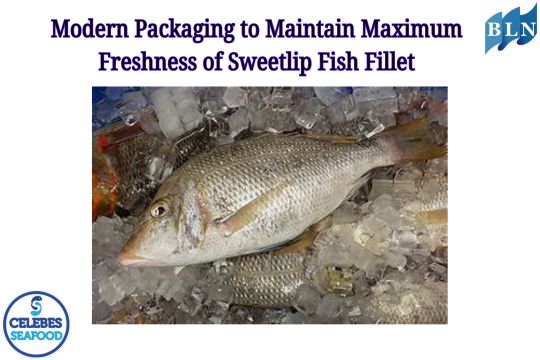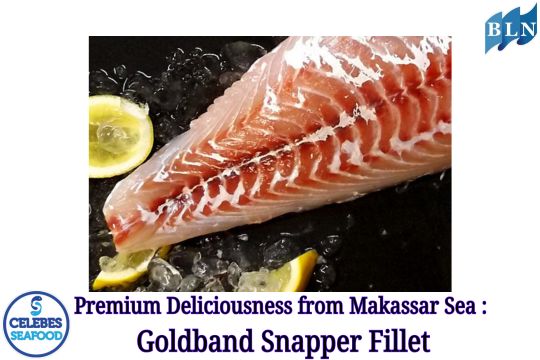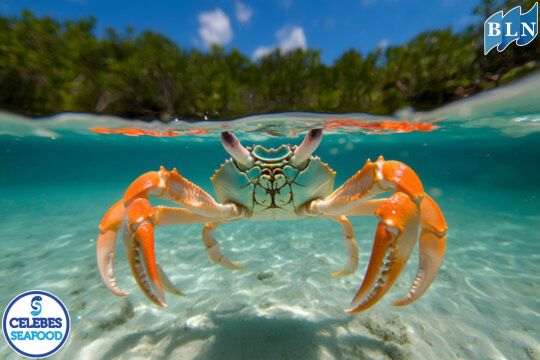Unveiling the Magic of Freeze Drying: Preserving the Freshness of Frozen Fish with a Touch of Technology
By. Tri - 16 May 2025
lautnusantara.com_ As a maritime nation with abundant marine resources, fish is a vital commodity for Indonesia, including in South Sulawesi. However, the challenge of maintaining the quality of fresh fish, especially for long-distance distribution, is a major concern. This is where freeze-drying technology emerges as an innovative solution, promising frozen fish quality that is nearly equivalent to fresh fish.
Freeze drying is a unique dehydration method that involves freezing the product, followed by extreme pressure reduction to allow the frozen water within the product to sublimate directly into water vapor, without passing through the liquid phase. This process is carried out at low temperatures, which is key to maintaining product quality.
Conventional freezing methods are indeed effective in preserving fish, but they often cause the formation of large ice crystals within the fish muscle tissue. These ice crystals can damage the cell structure, leading to moisture loss, a mushy texture, and a decline in flavor after thawing.
Freeze drying overcomes these problems with several significant advantages:
- Maintains Cell Structure: The rapid freezing process at very low temperatures produces very small ice crystals, minimizing damage to the fish's cell structure. This preserves the original texture of the fish, so that after rehydration, the fish has a texture more similar to fresh fish.
- Preserves Nutrients: The low temperatures during freeze drying help preserve most heat-sensitive nutrients such as vitamins and essential omega-3 fatty acids found in fish. This is in contrast to heat-drying methods that can cause nutrient degradation.
- Retains Aroma and Flavor: The volatile aroma and flavor compounds in fish can be reduced during conventional drying processes. Freeze drying, performed at low temperatures, minimizes the loss of these compounds, so freeze-dried fish has a more authentic aroma and flavor after rehydration.
- Reduces Shrinkage: Because water is removed directly in the form of vapor, product shrinkage during freeze drying is much less compared to other drying methods. This maintains the original shape and size of the fish.
- Longer Shelf Life: The very low water content in freeze-dried products significantly inhibits the growth of microorganisms and enzyme activity that can cause spoilage. Freeze-dried fish can have a very long shelf life without the need for added preservatives.
The Step-by-Step Process of Freeze Drying Fish:
- Initial Freezing (Freezing): Fresh fish is rapidly frozen at very low temperatures (usually between -30°C and -50°C). This process is crucial for forming small ice crystals.
- Vacuum Application (Vacuum Application): The frozen fish is then placed in a vacuum chamber. The air pressure in the chamber is drastically reduced.
- Sublimation (Primary Drying): Under low pressure and with the application of gentle heat, the frozen water in the fish will sublimate, changing directly into water vapor. This process occurs gradually and takes a considerable amount of time.
- Desorption (Secondary Drying): After most of the frozen water is gone, the desorption stage is carried out to remove any remaining bound water in the fish material until a very low moisture content is achieved (usually 1-4%).
- Packaging (Packaging): The highly hygroscopic (easily absorbs water) freeze-dried fish is immediately packaged in airtight and moisture-proof containers to maintain quality and extend shelf life.
Applications and Potential in South Sulawesi:
Freeze-drying technology has significant potential for application in the fisheries industry in South Sulawesi. Some of its applications include:
- High-Quality Seafood Exports: Enabling the shipment of premium quality fish products to more distant markets without concerns about quality degradation.
- Development of Instant Fish Products: Creating practical and nutritious instant dried fish products for consumers.
- Utilization of Fish with Low Economic Value: Increasing the value of local fish species through freeze drying into more durable and higher-value products.
- Supply for the Food Industry and Restaurants: Providing high-quality fish raw materials with a long shelf life for various culinary applications.
Challenges and Future Prospects:
While offering many advantages, the initial investment for freeze-drying equipment is relatively high. However, with the large market potential and the added value generated, this technology represents a promising long-term investment. Support from the government and the development of research related to the application of freeze drying for various local fish species in South Sulawesi will further accelerate the adoption of this technology.
Freeze drying is not just a preservation method, but an innovation capable of transforming frozen fish products into high-quality products by maintaining optimal freshness, nutrients, aroma, and flavor. By continuously developing and adopting this technology, South Sulawesi has a great opportunity to enhance the competitiveness of its fishery products in both domestic and international markets, while sustainably empowering its marine resource potential.
If you are interested in our Coral Trout Fillet Skin On, CORAL TROUT WGG WHOLE GILLED GUTTED, TOMATO COD WHOLE GILLED GUTTED please do not hesitate to contact us through email and/or whatsapp.
.jpg)


.jpg)



